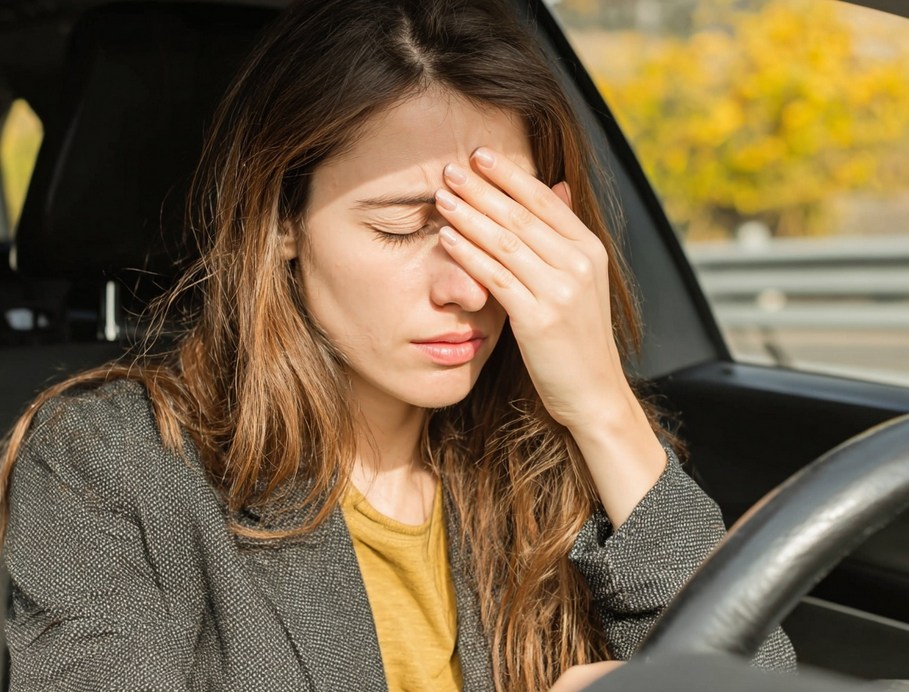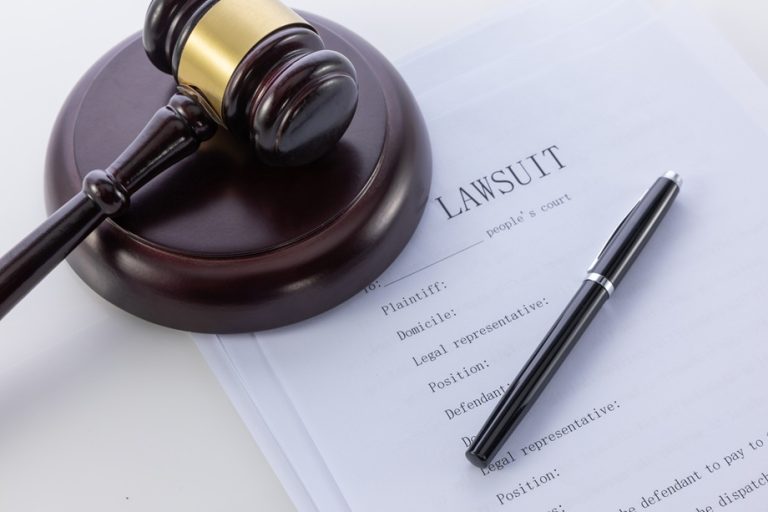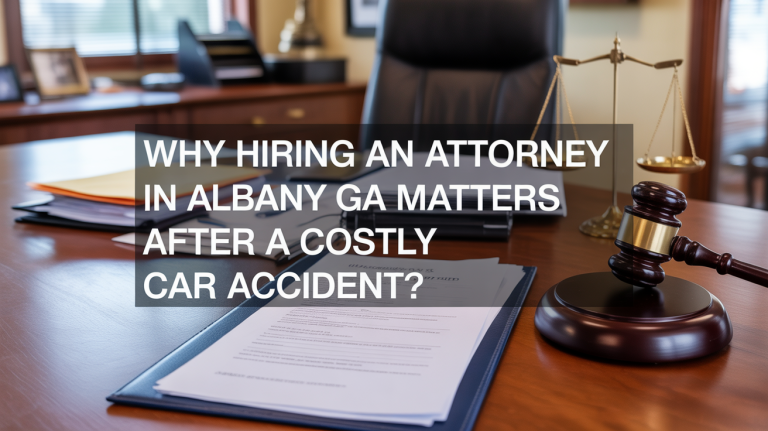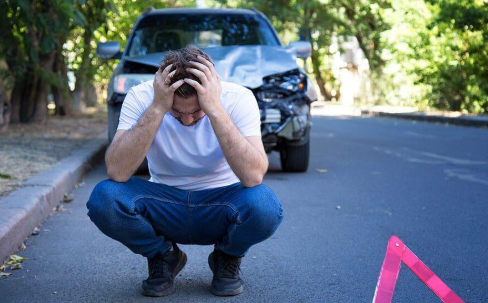You’re driving home after a long day at work. Traffic’s heavy, you’re tired, and for a split second your attention drifts to the radio. In that moment, you clip the car next to you. Minor damage, no injuries, but the police are called. A week later, you receive a letter. You’re being charged with a driving offence, but which one? And more importantly, what does it actually mean for you?
The distinction between dangerous driving and careless driving might seem straightforward on paper, but in practice, it’s the difference between penalty points and prison time. Understanding where that line sits could be one of the most important things you learn as a driver, particularly if you ever find yourself facing charges. The consequences stretch far beyond a court appearance, affecting your licence, your job, your insurance premiums, and potentially your freedom.
What is Careless Driving?
Careless driving, legally known as driving without due care and attention, is defined under the Road Traffic Act 1988. At its core, it refers to a standard of driving that falls below what would be expected of a competent and careful driver. The key word here is “below”, not drastically below or shockingly below. We’re talking about driving that’s substandard but doesn’t cross into truly dangerous territory.
Think about the everyday mistakes that drivers make. You’re changing lanes and don’t quite check your blind spot properly. You misjudge the speed of an oncoming vehicle when pulling out of a junction. You’re momentarily distracted by your sat nav and drift slightly into another lane. These are the kinds of behaviours that fall into the careless driving category. They’re lapses in concentration or judgment rather than deliberate acts of recklessness.
The legal test for careless driving is based on the “reasonable driver” standard. Would a reasonable, competent driver have driven in the same way under those circumstances? If the answer is no, and your driving fell below that expected standard, you could be looking at a careless driving charge. Courts will consider the specific circumstances of each case. Driving conditions, visibility, traffic levels, and the nature of the road all play a part in determining whether your driving crossed the line from acceptable to careless.
Common examples that end up as careless driving charges include undertaking other vehicles inappropriately, travelling too close to the car in front, emerging from a junction when it’s unsafe to do so, or even driving too slowly in a way that inconveniences or endangers others. The crucial element is that these actions represent a temporary lapse or error of judgement rather than a conscious disregard for safety.
What is Dangerous Driving?
Dangerous driving sits at the other end of the spectrum, and it’s a far more serious matter. Under the same Road Traffic Act 1988, dangerous driving is defined as driving that falls far below what would be expected of a competent and careful driver, and where it would be obvious to a competent and careful driver that driving in that way would be dangerous.
Notice the difference? It’s not simply “below” the standard, it’s “far below”. There’s also an additional element: the danger must be obvious. This is a higher threshold that requires both a serious departure from proper driving standards and a clear element of risk that any reasonable person would recognise.
Dangerous driving typically involves deliberate acts or such serious negligence that it’s hard to see how anyone could argue they didn’t realise the danger. Racing other vehicles on public roads is a classic example. So is driving at excessive speeds, particularly in areas where pedestrians are present or visibility is limited. Driving whilst significantly impaired by drink or drugs almost always falls into dangerous driving territory, as does aggressively tailgating, ignoring red lights at high speed, or driving a vehicle you know to be in a dangerous condition.
The law also considers the potential for danger, not whether an accident actually occurred. You can be convicted of dangerous driving even if nobody was hurt and no collision happened. If your manner of driving created an obvious risk to other road users or pedestrians, that’s sufficient. A driver weaving through heavy motorway traffic at 100mph might get lucky and not hit anyone, but the dangerous driving offence is made out regardless.
What sets dangerous driving apart is that element of obviousness. When someone drives in a way that any competent driver would immediately recognise as dangerous, that’s when we move from careless to dangerous. It’s the difference between a mistake and a choice that puts others at serious risk.

Key Legal Differences
Understanding the distinction between these two offences isn’t always straightforward, but several key factors help clarify where the boundary lies.
The severity test is perhaps the most fundamental difference. Careless driving involves a standard that falls “below” what’s expected, whilst dangerous driving requires conduct that falls “far below” that standard. This might sound like splitting hairs, but in legal terms, it’s a massive gulf. One suggests a momentary lapse or misjudgement, the other indicates driving so poor that it’s fundamentally unacceptable.
Then there’s the obviousness factor. For dangerous driving, the danger created by the driving must be obvious to a competent and careful driver. This is a critical test. If you’re arguing that you didn’t realise your driving was dangerous, the court will ask whether a reasonable driver in your position would have recognised the risk. If the answer is yes, your subjective belief doesn’t matter much.
Interestingly, intent doesn’t play as large a role as many people assume. You don’t need to intend to drive dangerously to be convicted of dangerous driving. If your manner of driving was objectively dangerous and that danger would have been obvious to a competent driver, your personal intentions are largely irrelevant. Similarly, you can be convicted of careless driving even if you were trying your best to drive carefully. It’s about what you did, not what you meant to do.
When courts consider these cases, they look at a range of factors. The nature of the road is important. Speeding through a busy high street carries different weight to speeding on an empty motorway at 3am. Weather conditions matter too. Driving that might be acceptable in dry, clear conditions could be careless or even dangerous in heavy rain or fog. The condition of your vehicle can also be relevant. Driving with dangerously worn tyres or faulty brakes elevates the seriousness of any incident.
Case law has established various precedents over the years. Drivers who’ve fallen asleep at the wheel have been convicted of dangerous driving where they knew they were tired but continued driving anyway. Mobile phone use whilst driving has resulted in dangerous driving convictions where it’s caused serious incidents or been particularly prolonged and blatant.
Penalties and Consequences
The penalties for these two offences reflect the significant difference in their seriousness, and the consequences can be life-changing.
If you’re convicted of careless driving, you’re looking at a fine, typically ranging from £100 to £2,500 depending on the circumstances and severity. You’ll also receive between three and nine penalty points on your licence. In some cases, the court might impose a discretionary disqualification, meaning they can ban you from driving if they consider the offence serious enough, though this isn’t mandatory. For less serious instances of careless driving, particularly where it’s a first offence, you might be offered the option of attending a driver awareness course instead of receiving points. This can be a preferable outcome as it doesn’t affect your licence and might even reduce your insurance premiums.
Dangerous driving, however, is a different ballgame entirely. It’s an indictable offence that can result in up to two years imprisonment. If the dangerous driving causes death, that increases dramatically to a maximum of 14 years. A mandatory disqualification is imposed for a minimum of 12 months, and you’ll be required to take an extended retest before you can drive again. The endorsment on your licence will show between three and eleven penalty points, though in practice, if you’re disqualified, the points become somewhat academic.
Beyond the immediate legal penalties, a dangerous driving conviction creates a criminal record. This can have serious implications for employment, particularly if you drive for work or need to travel internationally. Insurance premiums will skyrocket, assuming you can even find an insurer willing to cover you after a dangerous driving conviction. Some employers carry out regular licence checks, and a serious driving conviction could cost you your job.
The financial impact extends beyond fines and insurance. If you’re disqualified from driving, you might need to pay for alternative transport to work. If your job requires a driving licence, you could lose your income entirely. Legal costs for defending these charges can run into thousands of pounds, particularly for dangerous driving cases that go to Crown Court.
Real-World Scenarios: Where’s the Line?
Looking at concrete examples helps illustrate where the boundary between careless and dangerous driving actually sits.
Consider a driver who’s adjusting their heating controls and doesn’t notice the traffic slowing ahead. They brake late and cause a minor collision with the car in front. Assuming they weren’t doing anything else wrong, this would typically be careless driving. It’s a momentary lapse in attention that resulted in an incident, but it doesn’t represent the kind of sustained poor driving that amounts to dangerous driving.
Now imagine a driver who’s reading text messages on their phone whilst driving along a country road. They drift across the centre line into the path of oncoming traffic. Fortunately, the other driver takes evasive action and there’s no collision. This could very well be charged as dangerous driving. The use of a mobile phone whilst driving is itself illegal, and combining it with the failure to maintain proper lane position creates an obvious danger. The fact that no collision occurred doesn’t matter. The potential for serious harm was clear.
Take another scenario: two cars racing each other through a residential area late at night, reaching speeds of 60mph in a 30mph zone. Even if no pedestrians are about and no other vehicles are on the road, this is dangerous driving. The speeds are grossly excessive, the location is inherently risky (residential areas can have people emerging from driveways or crossing roads), and the competitive nature of the driving shows a blatant disregard for safety.
Then there are the grey areas. A driver who’s been working a double shift falls asleep at the wheel for a few seconds and drifts into another lane before waking and correcting. Is this careless or dangerous? The answer might depend on whether they were aware they were too tired to drive safely. If they knowingly got behind the wheel despite being exhausted, that pushes it towards dangerous driving. If they suddenly felt tired after setting off and had no reasonable way to predict it, it might remain in careless driving territory.
Context shapes everything. The same action, driving at 50mph in a 30mph zone for instance, might be careless driving on a clear day on a wide road with good visibility, but dangerous driving at night in heavy rain on a narrow residential street. Courts don’t apply these definitions mechanically. They consider all the circumstances to determine which side of the line your driving falls on.
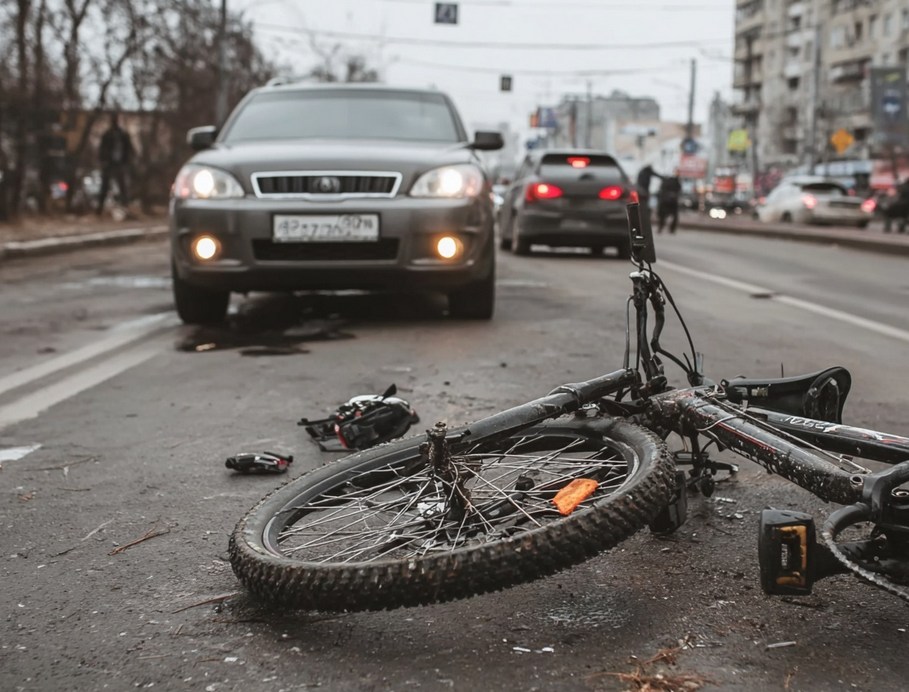
What to Do If You’re Charged
Receiving notice that you’re being charged with a driving offence can be frightening, particularly if you’re facing dangerous driving allegations. Understanding the charge and its implications is your first priority.
The type of charge you’re facing should drive your response. A careless driving charge, whilst serious, might be something you can handle with limited legal advice, particularly if the facts are relatively straightforward and you’re pleading guilty. You’ll attend magistrates’ court, and the penalties, whilst inconvenient, are manageable for most people.
Dangerous driving is a different matter entirely. Given the potential for imprisonment and mandatory disqualification, getting proper legal representation isn’t optional, it’s essential. The consequences are too serious to navigate alone. Specialist motoring solicitors understand the nuances of these cases and can make a real difference to the outcome.
Start gathering evidence immediately. If you have dashcam footage, preserve it carefully. Get contact details from any witnesses who might support your version of events. Take photographs of the scene if possible, noting road conditions, visibility, signage, and any other relevant factors. If your vehicle was involved, document its condition. The more evidence you can compile, the better your solicitor can prepare your case.
Your defence strategy will differ enormously depending on whether you’re charged with careless or dangerous driving. For careless driving, you might argue that your driving didn’t actually fall below the required standard, or that circumstances beyond your control contributed to the incident. For dangerous driving, the higher threshold means there’s often more scope to argue that whilst your driving might have been careless, it didn’t reach the level of being “far below” the required standard or that the danger wasn’t as obvious as the prosecution suggests.
This is where specialist legal advice becomes invaluable. Traffic lawyers who focus on traffic offences, like the ones on Podmore Legal, understand the technical distinctions and how courts apply them in practice. They can review the evidence against you, identify weaknesses in the prosecution case, and advise on the realistic prospects of defending the charge versus the benefits of an early guilty plea.
The plea you enter has significant implications. An early guilty plea to careless driving might result in a reduced fine and fewer penalty points. For dangerous driving, a guilty plea can reduce your sentence, but you need to weigh this against the prospects of successfully defending the charge or having it reduced to careless driving. This isn’t a decision to make lightly or without proper legal advice.

Can Charges Be Reduced?
One question that arises frequently is whether dangerous driving charges can be reduced to careless driving. The answer is yes, but it depends entirely on the strength of the evidence and the circumstances of your case.
Prosecutors have a duty to review charges continually as cases progress. If evidence emerges that suggests the driving, whilst below standard, didn’t meet the higher threshold for dangerous driving, they may agree to reduce the charge. This often happens during plea negotiations, where your solicitor presents arguments about why the driving doesn’t satisfy the “far below” test or why the danger wasn’t as obvious as initially thought.
Defence lawyers can commission expert evidence to support arguments for charge reduction. An accident reconstruction expert might demonstrate that speeds were lower than the prosecution alleges, or that road conditions played a more significant role than appreciated. This kind of evidence can be persuasive in convincing prosecutors that dangerous driving can’t be proved beyond reasonable doubt, but careless driving can.
The burden of proof always rests with the prosecution. For dangerous driving, they must prove beyond reasonable doubt that your driving was far below the expected standard and that the danger was obvious. If there’s any realistic doubt about either element, a jury (or magistrates for careless driving) should acquit you of dangerous driving. Your solicitor’s job is to identify and highlight any such doubts.
However, reality check time: if the evidence against you is strong, fighting a dangerous driving charge can be risky. If you’re convicted after trial, you lose the credit for an early guilty plea, and sentences can be significantly higher. Sometimes accepting a careless driving charge, even if you believe you could fight it, is the pragmatic choice. This is a strategic decision that requires careful consideration of the evidence, the likely outcome at trial, and the penalties you’re facing.
Having experienced legal representation makes an enormous difference in these negotiations. Prosecutors are more likely to engage seriously with well-argued submissions from respected solicitors than with defendants representing themselves. The technical knowledge and credibility that specialist firms bring to the table can open doors that would otherwise remain closed.
Final Thoughts
The line between careless and dangerous driving might appear blurry at times, but the consequences of ending up on the wrong side of it are crystal clear. One offence results in points and a fine, the other can mean prison and losing your licence entirely. For anyone who drives regularly, particularly those who rely on their licence for work, understanding these distinctions matters.
The good news is that most drivers will never face either charge. Driving with proper attention, at appropriate speeds, and with consideration for other road users keeps you well away from both categories. But mistakes happen, and when they do, knowing what you’re facing helps you respond appropriately.
If you do find yourself charged with a driving offence, take it seriously from the outset. Don’t assume a careless driving charge is trivial, it will affect your licence and insurance. Definitely don’t underestimate dangerous driving allegations. Get proper legal advice early, preserve evidence, and make informed decisions about how to proceed.
The roads are safer when everyone understands their responsibilities and the consequences of falling short. Whether it’s a momentary lapse or something more serious, the legal system has mechanisms to address it. Understanding how those mechanisms work puts you in a better position to navigate them if you ever need to.

